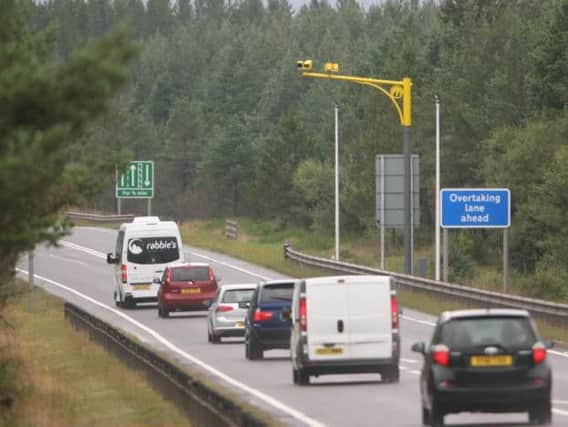A9 average speed camera safety record marred by fatal crashes


The incidents last autumn mean casualties on the road between near Dunblane and Inverness were down by 37 per cent in the two years to October, compared to 45 per cent up to last July.
The latest quarterly statistics from the A9 Safety Group also showed that although the cameras have dramatically cut speeding, the proportion of drivers breaking the limit crept up again late last year.
Advertisement
Hide AdAdvertisement
Hide AdIn September, a van driver was killed when it ran into the back of a lorry stopped at temporary traffic lights near Blair Atholl.
A month later, a car passenger died and three other occupants were seriously injured after it went out of control and crashed into an oncoming van near Luncarty, just north of Perth.
A total of ten people have been killed in the first two years of camera operation, compared to the previous average of 16.
Total casualties have fallen from 235 to 147.
Speeding has been reduced by 95 per cent, but the proportion of drivers breaking the limit has nearly doubled at some locations since that major initial fall when the cameras were switched on.
At Killiecrankie, where 27 per cent of motorists broke the 60mph limit before the cameras, the proportion has since increased from 6.6 per cent to 11.1 per cent.
The number of drivers clocked at between 70mph and 80mph has also gone up from one in 385 to one in 125.
The cameras cover single carriageway stretches of the road between Perth and Inverness, and the dual carriageway stretch between Dunblane and Perth.
A9 Safety Group chair Stuart Wilson said: “These most recent figures continue to demonstrate that driver behaviour on the A9 between Dunblane and Inverness has significantly improved since the introduction of average speed cameras, with the number of overall casualties down by 37 per cent.
Advertisement
Hide AdAdvertisement
Hide Ad“Improvements have been seen both north and south of Perth, journey times are more reliable and this vital route has seen fewer incidents and delays.
The report added: “With performance data being published every three months, there is always the risk that variations in data between reporting periods can be misinterpreted, which is the key reason why road safety schemes are evaluated over a three-period, which lessens the impact of short-term variations and considers the longer-term impact of the mitigation measures.
“This report does highlight such a short-term variation from the last report, caused by a small number of collisions that involved a high number of serious injuries.
“The longer-term trend continues downward as we reach the point that we are two-thirds of the way through the three-year monitoring programme.”